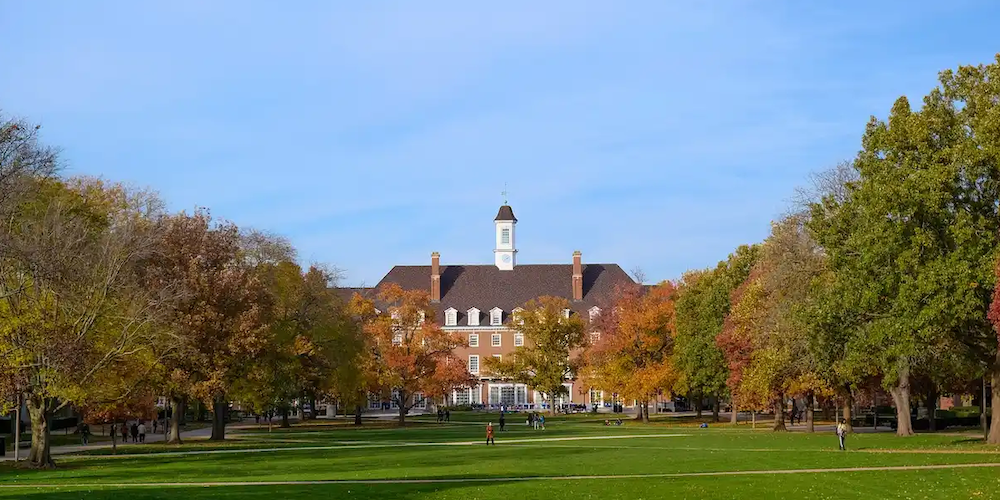Learning from Global Experiences

In May 2023, the University Grants Commission (UGC), a statutory body that oversees higher education in India, released draft guidelines to regulate the entry and operation of foreign higher educational institutions (FHEIs) in the country, an idea that stems from the 2020 National Education Policy (NEP) that seeks to reform education in India
A new study released by the leading think-tank Obeserver Research Foundation (ORF) has suggested ways how India can best implement the Modi Government’s idea of attracting foreign higher educational institutions (FHEIs) in the country, an idea that stems from the 2020 National Education Policy (NEP) that seeks to reform education in India.
Written by Yugank Goyal and Karishma K. Shah, the study, titled Foreign Universities in India: Lessons and Learnings from Global Experiences, presents a case study-based analysis of China, the UAE, South Korea and Malaysia.
The authors rightly point out the three rrasons behind the government’s idea. The decision to allow FHEIs to operate in India appears to be driven by three factors. The first is to offer high-quality higher education to Indian students who are otherwise compelled to go abroad. Indian universities typically do not figure in global university rankings. As Indian youth increasingly aspire for high-quality higher education, they are forced to seek such options in foreign countries. In 2022, nearly 1 million Indian students moved to foreign countries to study. Indian students pursuing education opportunities abroad results in a ‘brain drain’ for the country and substantial costs for students and their families through high fees and living expenses.
Second, India is seeking to attract reputed FHEIs and build an ecosystem of high-quality teaching and research in the country.
Third, India has only a handful of private universities that have the potential to become world-class universities. Allowing FHEIs to operate in India will increase competition and compel emerging private universities to build capacity and enhance quality.
However, not many FHEIs have responded to India’s invitation. Only two universities have confirmed their interest in establishing operations in India—Australian institutes Deakin University (which is interested in establishing a campus in Ahmedabad’s GIFT City) and the University of Wollongong.
According to the authors, this limited interest is not entirely surprising. Global experiences (as discussed in this paper) highlight that the structure, size, location, and fees are crucial determinants in the evolution and sustenance of FHEIs and must be carefully examined to reap the benefits of such ‘imports’.
As the case studies showcase, FHEIs can engage in more profound research in partnerships with local institutions, while stand-alone FHEI campuses are more teaching-focused. The FHEIs are typically small, highly urbanised, and far more expensive than local universities.

The experiences of China, UAE, South Korea, and Malaysia present clear learnings for India, the authors say. The structure of the FHEI operating in India will be the most critical aspect. If India is seeking to augment its institutions’ research capacity, the UGC should encourage partnership models through which FHEIs establish centres/campuses in collaboration with existing Indian universities.
India can also consider the co-location option, where foreign and Indian universities are located within the same campus, thus drawing from each other’s ecosystem and undertaking many collaborative projects. There is significant knowledge spillover in a clustered geographical space. If FHEIs and local universities develop joint centres (in addition to joint teaching and degrees), the research capacity of Indian universities will improve, and this should be a goal of the UGC regulations.
Many foreign universities have established ‘centres’ in India, but these typically function as the local hosts for their faculty members who want to conduct research in India, or to reach out to potential Indian students. Nearly all important decisions, including on financing, are made by the home institutions. To boost the capacity of local institutions, the UGC guidelines must encourage research collaborations, where foreign universities also invest in this research.
Notably, the authors argue that efforts to internationalise higher education in India must focus on maintaining a balance between the import-export of education to establish the country as a global educational hub rather than focusing exclusively on importing FHEIs. FHEIs in India will not necessarily provide a Western educational experience; instead, they will compete with local institutions, catering only to a limited number of urban students seeking an international degree without relocating or paying high fees. To indeed emerge as a global education hub, India must also push the export of education.
The authors conclude that attracting FHEIs will require customised mechanisms that cater to university-specific expectations. One way to do this is to encourage the partner model by empowering local universities to lead in establishing a beneficial partnership. But this will also need additional state support to the local universities to make them attractive partners for FHEIs, the authors suggest. A vital reform on this front will be in the governance models of the local universities, where the leadership must be chosen from a pool of global academics who should be given significant autonomy in utilising their research and faculty budgets. This will amplify the research productivity of the institutions and convey a strong signal of quality.
Given the high number of foreign university offices in India (primarily clustered in Delhi and Mumbai), it is clear there is an interest in India. To ensure that this interest goes beyond attracting Indian students to foreign countries, it is essential to incentivise the research ecosystem for FHEIs in India. This will be in keeping with the NEP’s goals.


